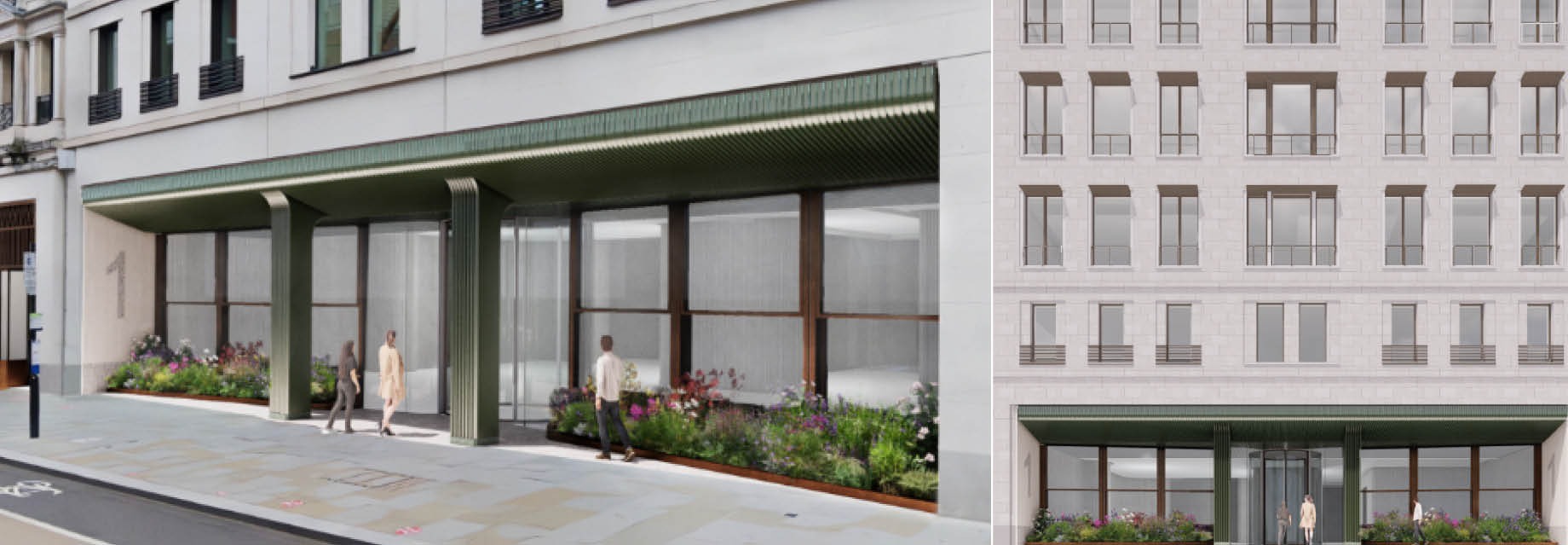
One Hanover Street is an iconic listed building fronting Regent Street, positioned in the heart of London, just a stone’s throw from Oxford Circus Underground Station.
The project involves the comprehensive refurbishment of the building’s office accommodation on Levels 2–6, alongside the creation of a new amenity space at Level 7. The introduction of this additional floor presented a significant logistical challenge, as much of the existing building services plant previously occupied the roof space at this level. To address this, a new double-height, stepped plant area has been constructed to the west of the building. This dedicated zone now houses new air-source heat pumps and air-handling units, which connect into newly formed ventilation risers in the local vicinity down the building.
All MEP systems within the building are being fully replaced, with new services distributed through the upgraded risers to each office floor. The refurbished building will benefit from high-efficiency heat-recovery systems, LED lighting throughout, intelligent lighting controls, a common network system and new fan-coil units, among other modern building services upgrades.
The basement, lower-ground, ground and first floors are shared with several well known, high-profile retail tenants. Maintaining uninterrupted operation for these retailers throughout the construction period represents a significant challenge and a key driver of the project’s success, phasing and methodology.
In addition to delivering entirely new MEP services, the scheme is targeting an ambitious suite of sustainability and smart-building accreditations, including BREEAM Outstanding, WELL Core Gold (minimum), NABERS Design Reviewed Target Rating of 5 Stars, WiredScore Platinum, SmartScore Platinum, and an embodied-carbon target of 257.50 kgCO₂e/m².
The embodied carbon target is being achieved through a combination of sustainable material selection, waste-reduction measures, reuse of existing floor tiles and steelwork, and the adoption of cable basket systems in lieu of traditional containment, among many other low carbon strategies.
The project commenced on site in September 2025 and is scheduled for completion in early 2027.